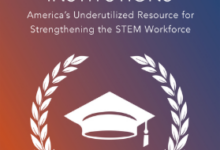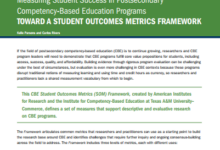In 2023, the SREB Dual Enrollment Initiative will engage states and obtain external funding to advance dual enrollment as a means for high school students to complete college credentials that are aligned with workforce readiness. These postsecondary credentials may range from nine to 18 credit hours and will be offered by participating two- and four-year colleges and universities. Through partnerships connecting faculty with industry leaders, students and parents, states will develop dual enrollment practices that are effective, equitable, affordable and sustainable. With a focus on student completion and program accountability, SREB will help states with these three priorities:
1. Use dual enrollment to improve high school students’ completion of postsecondary
credential programs.
2. Expand access to dual enrollment by increasing the number of high school faculty who are credentialed to teach postsecondary courses that award both college and high school credit.
3. Identify, collect and report key data that aligns with states’ dual enrollment objectives, to inform continuous improvement.
Credentials and Assessments
This case study by the National Center for Education Evaluation and Regional Assistance at the Institute of Education Sciences…







